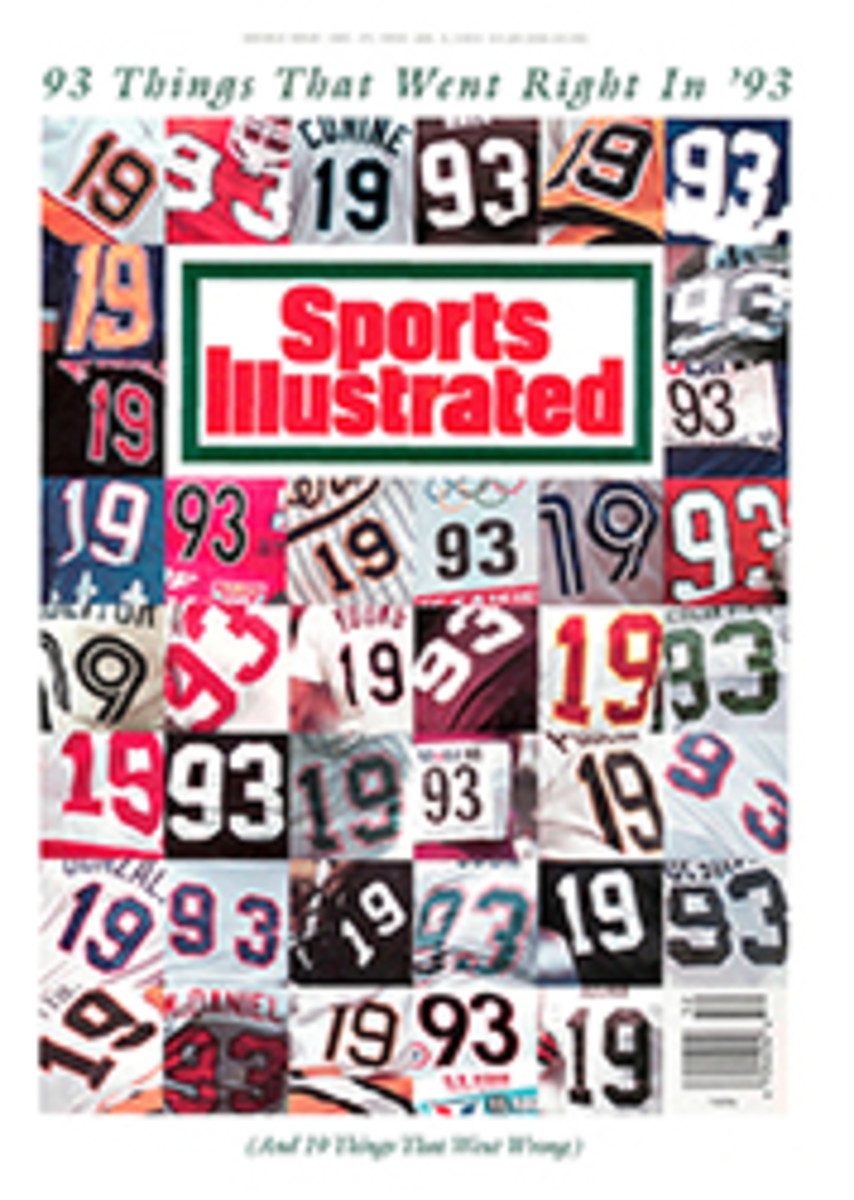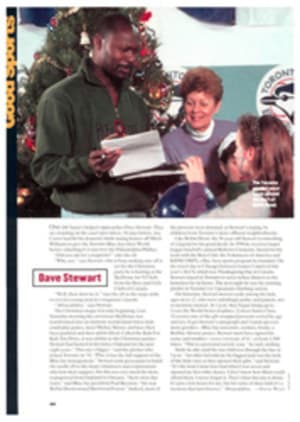
A Taste for the Toothbrush
Crawford Carrick-Anderson, the fastest dry-slope skier in Scotland, puts his skis over his shoulder, stuffs a container of furniture polish into his pocket and heads for the chair lift. It is a cloudless 70° day in September, and the sheep grazing in the Pentland Hills, eight miles south of downtown Edinburgh, are gorging themselves on thick tufts of grass. On a golf course that is spread over the foothills of the Pentlands, the duffers are out in full force. And on the small slope that Carrick-Anderson is riding up, the 1993 British Dry Ski Slopes championships are about to begin.
Although the first dry hill was installed in France in 1960, dry-slope skiing is almost exclusively a British sport. There are about 100 dry slopes in Europe, more than 90 of them in Great Britain and most of the rest in the Netherlands and Ireland (the one in France is long gone). Dry-slope skiing relies on the same equipment and technique as snow skiing. The surface, though, is made up of 1½-inch-high white plastic bristles that are mounted on steel-backed strips and arranged in a diamond pattern—each diamond about four inches across—on a smooth, grassy hill. Although grass pokes through the huge grid, dry-slope skiers refer to the entire surface as the mat or the plastic or, most descriptively, the toothbrush.
The '93 championships are being held on the world's longest toothbrush, the 1,200-foot-long Hillend Ski Centre. A total of 208 men and women, representing the top dry skiers in England, Scotland and Wales, as well as the best from Ireland and the Netherlands, have arrived for the two-day men's and women's events—a slalom the first day and a giant slalom the next. The championships, which move from Scotland to Wales to England every two years ('93 was the second year for Scotland), have been held annually since 1970; these are among the few national ski races Britain can stage on its home turf.
The entrants, ranging in age from 11 to 33, are an odd amalgam of skiers. Some are strictly dry-slope racers who can't afford trips to the giant snow-skiing resorts of continental Europe; most are young hotshots who hope to use their success on the mat as a stepping-stone to a spot on a national Alpine team; a few are in the twilight of their racing careers, seeking a last bit of glory.
Carrick-Anderson, who lives in Edinburgh and learned to ski at Hillend, is in the last category. Although he is only 23, a torn ligament in his right knee, suffered while he was training on snow the year before the Albertville Olympics, effectively ended his career. Crawfie, as Carrick-Anderson is called, is profoundly deaf, a condition he has had since birth but one that, according to his father, Chris, "he has never let interfere with his life."
He has certainly not let it interfere with his skiing. Except for requiring a wave of the starter's hand instead of the traditional call of "Three, two, one, go!" Carrick-Anderson received no concessions in ascending to the upper echelons of British ski racing. And although Carrick-Anderson has had a limited amount of time to train in the past year—he designs and makes sterling-silver jewelry, helps out in an Edinburgh hotel and also races motorcycles—his talents are apparent. Two weeks before the British championships he won the Scottish title, also contested at Hillend, establishing himself as the favorite at the championships.
By the time Carrick-Anderson reaches the starting area for the slalom, the place is teeming with competitors, all working feverishly on their skis. Plastic creates far more friction than snow, so a ski's base must be well lubricated to run smoothly. Each racer has his or her own method of priming skis. Most start with a thick coat of wax, followed by a "secret" solution sprayed on just before race time. Carrick-Anderson's secret is furniture polish; others use shaving cream, dish-washing liquid, vegetable oil, deodorant spray, leather buffer or some combination of them all. The top of the course, which is littered with the empty containers of these various concoctions, looks as it would if a rampaging high school chemistry class had been inflicted on it.
Carrick-Anderson is one of the last racers to ski. Before moving into the starting gate, he reverses his pink painter's cap and stares meditatively at the distant horizon. The view from the 2,000-foot summit of Hillend is spectacular. Golf courses end where the red-roofed houses of the suburbs begin. Beyond those are the busy streets of Edinburgh, teeming with double-decker buses. Then there is Edinburgh Castle, sitting majestically on its rocky perch, and finally, the glistening waters of the Firth of Forth. "There is something in the view that spirits up your blood," wrote Scotsman Robert Louis Stevenson, whose words are inscribed on a plaque near the top of the chair lift.
With an enormous kick, Carrick-Anderson explodes out of the gate, his lips forming an O as he struggles to hold an edge on the plastic. "Dry-slope skiing is unforgiving," says Sarah Lewis, Alpine director of the British Ski Federation and an Olympian in 1988. "If there is any flaw in your technique, you will have big, big problems. Dry slopes show your mistakes even more clearly than ice." The plastic is also dangerous. A high-speed crash almost always leaves severe friction burns, and even during a minor tumble a finger can be caught in the gridded mat. Mangled thumbs are so prevalent among dry-slope skiers that British doctors refer to a certain break as a Hillend thumb.
None of this seems to faze Carrick-Anderson. He takes the straightest, fastest line through the gates, his scraping skis sounding like sheets of cardboard being ripped in half. He wins the first run easily, then goes back up later in the afternoon and triumphs in the second run as well. The slalom title is his.
The next day's weather is typical, for Scotland. The sky is the color of lamb's wool, and the rain, blown by gale-force gusts, seems to be falling horizontally. Elaine Adam is happier about this than anyone else. Adam, 22, who teaches canoeing and orienteering at a suburban Glasgow high school, won the women's slalom the day before and is thrilled at the dampness, which will create a faster surface for the giant slalom. "I just love when the rain is chucking it down; it makes the course really scary," says the intrepid Adam, waiting for her run. She is sitting in the tiny, base-area restaurant, where the special of the day is the Scottish delicacy haggis, with tatties and neeps—boiled sheep intestines, mashed potatoes and stewed turnips.
Adam, like Carrick-Anderson, is Scottish and a former British national-team member who had her hopes of ski-racing glory dashed by a knee injury. She is a bit of an anachronism: Instead of wearing a specially padded and insulated ski outfit like most of the other racers, she competes in a wool fisherman's sweater and purple sweatpants. Her only nod to current technology is a jet-black helmet. "I've landed on my head quite a number of times," she says.
Adam's technique, too, seems to be a throwback to less sophisticated times. In the giant slalom she doesn't bother to check her speed on the steep top section, and she barrels into the lower flats seemingly out of control. It is a risky tactic, but a calculated one: Adam will either crash or win. She careers across the finish line, scarlet hair streaming from beneath her helmet, and lifts her arms in triumph as her time flashes on the scoreboard. After 10 years of trying, Adam has won the dry-slope championships.
An hour later Carrick-Anderson roars down the toothbrush, swatting gates out of his way, once again maintaining a grip on the mat on which other racers were forced to skid. He, too, wins both events, and he joins Adam on the top tier of the victory podium. They are awarded crystal trophies—there is no prize money—and stand together for a moment, basking in what might be the sunset of their racing careers. Someone asks whether they are inspired to continue their dry-slope training. "No," says Adam, pointing to an ugly bruise on her forearm, "I'm looking forward to going to Europe and skiing the real snow." Crawfie, reading her lips, nods his head vigorously in agreement.
PHOTO
LANE STEWART
Carrick-Anderson has conquered plastic but admits he likes the real stuff too.
TWO PHOTOS
LANE STEWART
Dry-slope skiers like Crawfie (above) use a blend of lubricants to prime their skis.
Michael Finkel, a contributing editor at Skiing Magazine, lives in Bozeman, Mont.

